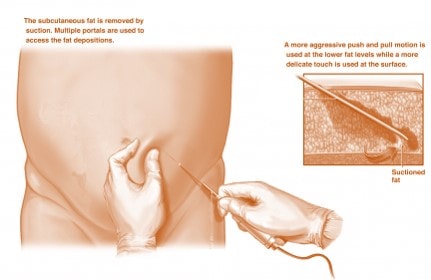Fat vs. Bone Marrow Stem Cells: A Clinician’s Perspective

In summary, harvesting fat in a mini-liposuction is a violent affair, harvesting stem cells from a bone marrow aspirate is like an advanced blood draw. Let me explain.
In order to get fat through a mini-liposuction you need to first use a scalpel to open a small incision in the skin. This isn’t at all required for a bone marrow aspiration as the needle is just inserted into the skin like any other needle. In the liposuction, the whole goal is disrupting large amounts of normal tissue. In fact, the stem cells live around the blood vessels, so you have to chew up as many blood vessels in the fat as possible to get a good stem cell yield. This involves placing a small wand like device under the skin and into the fat and moving it back and forth (through much resistance) to break apart large sections of tissue. The bone marrow aspiration simply involves directing the needle under the x-ray to the desired area of bone. The needle is then turned back and forth a few times to enter the bone (which is like hard plastic instead of cement). At this point in the liposuction the doctor must continue to break up large swaths of tissue with suction, sucking the broken tissue and blood vessels into a syringe. On the other hand, in the bone marrow aspiration the doctor simply draws the bone marrow aspirate (which looks like blood) into the syringe like a common blood draw.
The complication rates for these two procedures tell the rest of the story. Mini-liposuction procedures have surgical style complication rates of 3-10%, while bone marrow aspiration complication rates are so rare that only a handful occurred in more than 20,000 procedures in one U.K. registry. The upshot? It always makes me chuckle (in a bad way) when I hear fat stem cell advocates claim that a bone marrow aspiration procedure is so invasive. You haven’t seen invasive until you’ve seen a lipo-suction!

NOTE: This blog post provides general information to help the reader better understand regenerative medicine, musculoskeletal health, and related subjects. All content provided in this blog, website, or any linked materials, including text, graphics, images, patient profiles, outcomes, and information, are not intended and should not be considered or used as a substitute for medical advice, diagnosis, or treatment. Please always consult with a professional and certified healthcare provider to discuss if a treatment is right for you.
